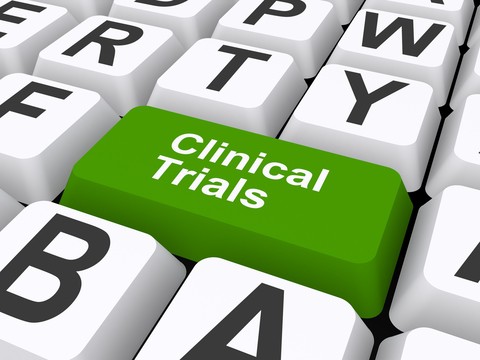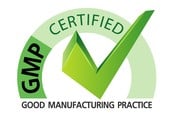GMP and Product Development Phases
 Thousands of biotech pharma companies are conducting excellent research for the development of novel medicines for existing and unmet needs. According to clinicaltrails.gov, there are at this time more than 115,000 clinical trials being conducted in the US alone with around 22,000 studies in pre or clinical phase 1, 29,000 in clinical phase 2 and 13,000 in clinical phase 3 representing different stages of product development. While the major focus of the pharma developing early clinical trials materials is on the R&D, it is important to note that GMP knowledge and implementation is equally important.
Thousands of biotech pharma companies are conducting excellent research for the development of novel medicines for existing and unmet needs. According to clinicaltrails.gov, there are at this time more than 115,000 clinical trials being conducted in the US alone with around 22,000 studies in pre or clinical phase 1, 29,000 in clinical phase 2 and 13,000 in clinical phase 3 representing different stages of product development. While the major focus of the pharma developing early clinical trials materials is on the R&D, it is important to note that GMP knowledge and implementation is equally important.
How much GMP?
The plain and simple answer could be “never enough”. However, unless the company has a constant flow of revenues, never enough may not be the right approach. In this article, I will discuss the minimum GMP requirements for early phase companies, at different stages of development.
The question, a clinical phase company should ask is when was the last time, some expert quality personnel audited the process from receipt of raw material like a cell line to clinical trials material release and subsequently to clinical outcomes if any. If the answer is “never” or “a long time ago” then the company may be in for surprises in the data generated. Another important point to remember is that R&D should never be controlled yet must be challenged from time to time through development life cycle documents and quality personnel.
The failure rate of clinical trial materials and outcomes is sometime alarmingly high, which leads to failure of the company to progress. Could the excessive failure rate be because of this lack of challenge to the process in general and R&D in particular? The answer could very well be YES. GMP is a state of mind which in a strange way closely resembles R&D with the queries of how and why.
The common perception of no GMP for phase 1 and pre-clinical studies is totally misleading, partly confused by 21 CFR 210 final rule which states that 21 CFR Part 211 does not apply to investigational drugs for use in phase 1 clinical trials. The reason for this confusion is that we tend to miss the requirements that follow it up as “unless the investigational drug has been made available for use by or for the sponsor in a phase 2 or phase 3 study” and the requirement of GMP for this phase in the form of different FDA and other guidance. In short, GMP is needed at all stages where a product is intended for human use regardless of its development phase. The difference of the state of GMP in different phases of development is the degree of GMP in terms of the knowledge acquired as the product moves from pre-clinical to phase 1 to phase 2 to phase 3 and commercial.
Critical GMP Parameters
Here are some critical GMP parameters with respect to different phases of development:
- Calibrated equipment shall be used and a strong equipment maintenance program shall be in place starting with the R&D and be finalized before the start of the phase 1 development.
- The proposed design of the facilities, utilities and equipment used shall be suitable for intended purpose. Design Review / Qualification shall be initiated before systems / equipment are shipped to the site.
- Analytical methods shall be qualified at the pre-clinical (Tox) phase with qualification completed by phase 1. A method can only be considered qualified if the system it is executed on is qualified first. The degree of system qualification in turn need associated impact and risk assessment of the system, its functions and components for its impact on the quality of the product in the given development phase. Therefore, it is recommended that system impact assessment, function criticality assessment, and component criticality assessment be initiated as soon as possible, preferably in the pre-clinical phase.
- Analytical method validation shall proceed from phase 1 and continue into phase 3 as more information is accumulated during product development.
- Systems / Equipment shall be qualified for phase 1 development use, with the risk and criticality assessments completed at the beginning of this phase.
- Bioburden and Endotoxin Controls shall be in place at the beginning of phase 1 development and continue into BLA submission phase (phase 2b or 3) as more information is collected about the product.
- Process validation shall begin at the latest at the start of BLA submission phase and completed before the end of this phase.
Final Thoughts:
While the GMP rules are considered as designed to ensure patient safety, let us not miss out on the opportunity that these rules give us in ensuring smooth sailing from development to approval. The era of keeping clinical trial outcomes separate from development, manufacturing, and quality control departments is over as Biotech products are extremely sensitive to minor CMC changes. The separate phases of clinical trials and development are fading as we enter the world of biotech products where cohort studies are used for BLA submissions in phase 2.
Written By: Abdul Zahir, Project Manager III
References:
PDA Technical Report 56
EudraLex Volume 4
21 CFR Parts 210, 211, 600
International Committee on Harmonization (ICH) Q8, Q9, Q10
Analytical Procedures and Methods Validation for Drugs and Biologics: July 2015
FDA Quality Issues for Clinical Trial Materials: The Chemistry, Manufacturing and Controls (CMC) Review
ASTM International – Designation E2500-07



